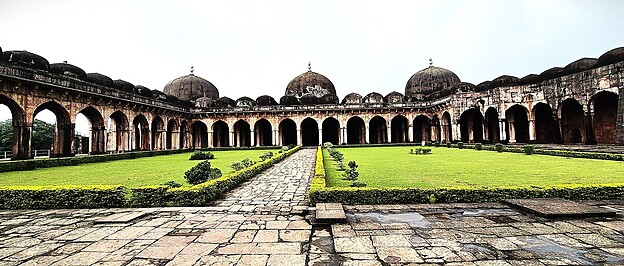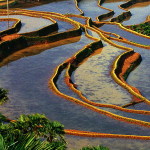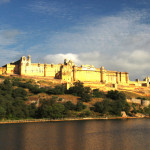Mark Nicholls explores Mandu the rural heart of India and discovers a forgotten city.
Mandu sits in all its glory, a lost jewel in the heart of India.
With palaces and pavilions, beautifully preserved mosques and mausoleums, it is one of the most atmospheric destinations in a country rarely short on surprises.
Sitting deep in the southern reaches of Madhya Pradesh means it can be overlooked by international tourists who understandably focus on attractions in the northern parts of the state, such as Khajuraho, Orchha or Gwalior.
But by arriving in Indore – itself worth spending time in if only to gorge on Indian street food at the famed night markets – Mandu is within easy reach 70 miles away.
Ghost City
Once here, visitors find themselves immersed in a forgotten world; preserved in time with monuments, mosques and palaces that are hundreds of years old. Mandu has a long history having risen to prominence in the 11th century and then fought over by a series of rival Muslim rulers before Hoshang Shah made it his capital and created much of the splendour we see today, including his mausoleum behind the Jami Masjid.
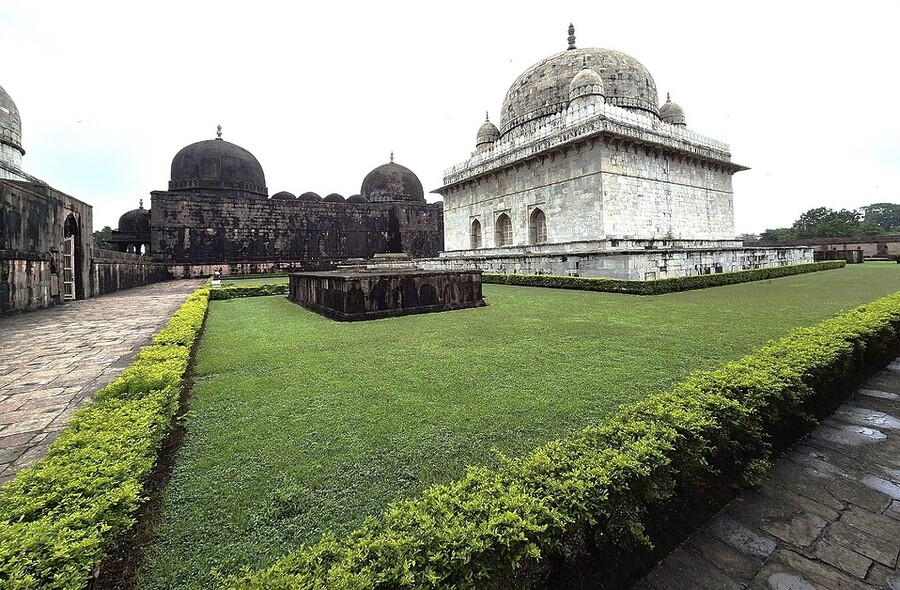
Ruled over briefly by the Mughal Emperor Humayan, it was conquered by Baz Bahadur – who built a magnificent palace that can be seen today – before the Mughals regained control of the area under Akbar.
At one time, known as Shadiabad (City of Joy), Mandu was later taken by the Marathas in 1732, who moved the capital of the kingdom back to Dhar. From then on Mandu’s importance declined, allowing it to become the wonderfully-preserved ghost city we see today.
Islamic Monuments
At an altitude of 2000 feet above sea level, it was a defensive stronghold and an influential area with the scattering splendour of palaces and tombs testament to that.
Central is the Jami Masjid with its three domes, pillared prayer hall, niches, mihrab, the green grass courtyard and the colonnades around the outside, which make this a truly atmospheric place to visit.
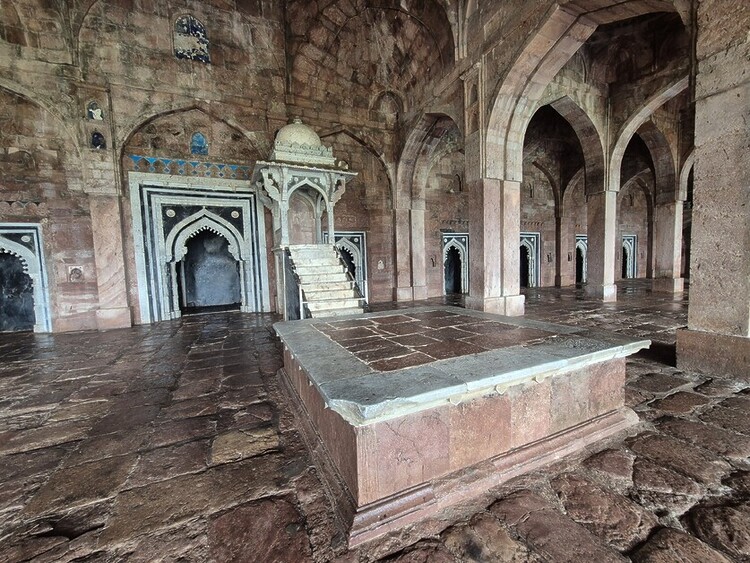
Set across a village square with fruit and veg sellers and the steps leading up the to Victory Arch, the mosque area also includes the tomb of ruler Hoshang Shah, which is set in equally peaceful grounds, with pillared cloisters and a central mausoleum with Hoshang Shah buried centrally and his wife and relatives beside him. It is an early example of Islamic monuments made of marble.
Swing Palace
Not far away is a highlight of Mandu, the Jahaz Mahal also known as the Ship Palace situated between the two artificial lakes of Munj Talao and Kapur Talao and given its name as it appears to be floating on the water’s either side. It also has some intriguing quirks, such as a swimming pool, a second pool on a terrace, open balconies overhanging the water and lovely views across the lake.
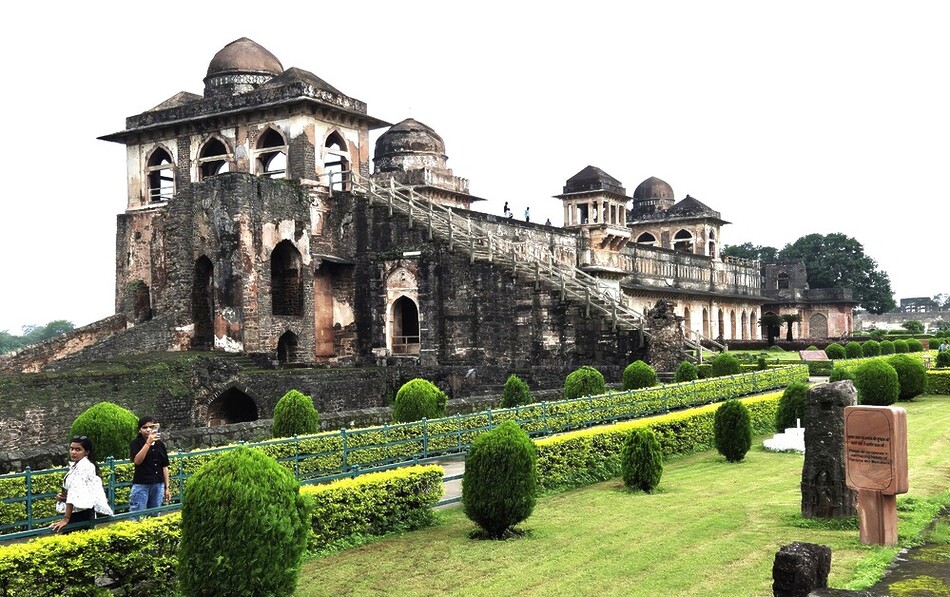
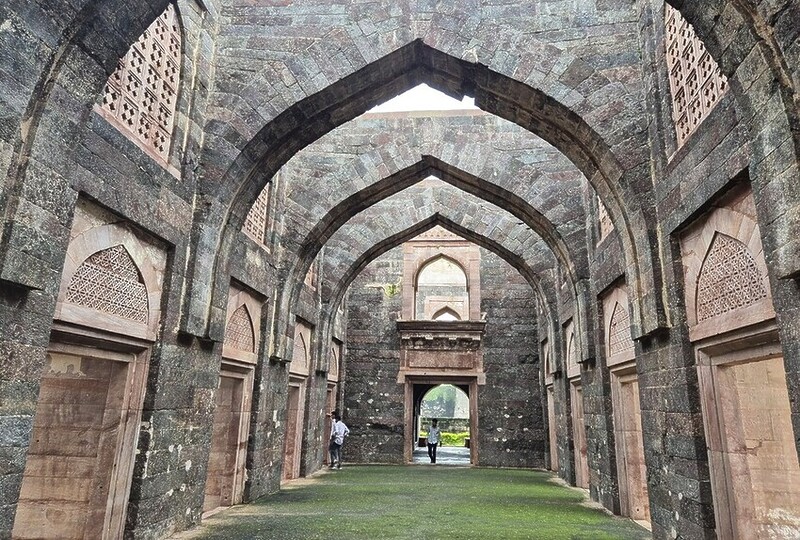
Within the same complex is the Hindola Mahal, constructed by Ghiyas-ud-din Khilji as an audience hall and named the Swing Palace because of its sloping sides and arches within.
It leads through to the royal palace complex with its wells and a hammam that has a fascinating ceiling of carved stars that let the light of the full moon filter through when bathing and were also for ventilation.
The complex, constructed during the 15th century as a luxurious retreat for the Sultans of Malwa, has around 400 rooms plus a harem where 15,000 women were kept and not allowed to be seen by outsiders, or leave the palace.
Reflection Pools
Wherever you venture, Mandu is alive with intriguing monuments. Even as you drive there, the road passes beneath a fortified wall which once stretched for more than 20 miles with 12 gates. Today, it still wraps around the scattered palaces and mosques.
Elsewhere is Sonergarh Fort, now in ruins, while Roopmati’s pavilion which sits high above the Narmada river stands firm and defiant.

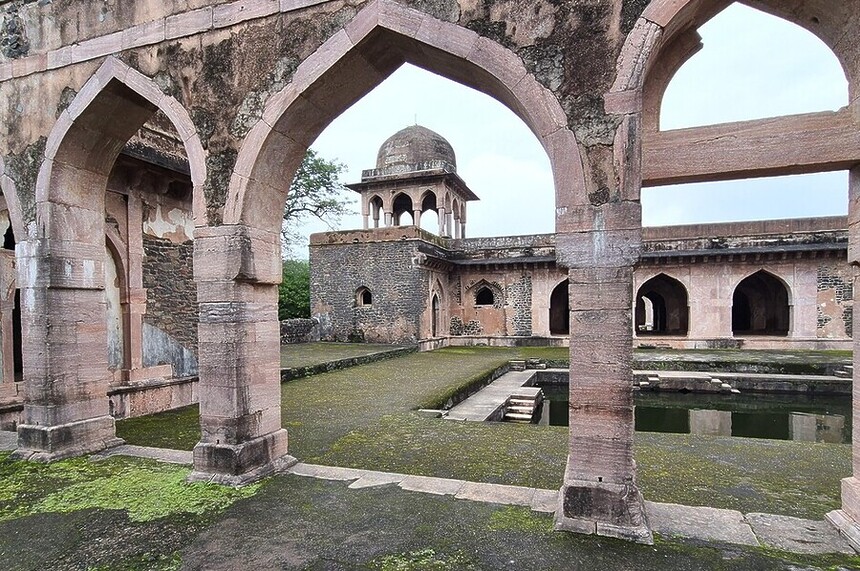
It was intended as an observation post but was also where the so-called poet Queen of Mandu, Roopmati, lived. She became consort to Baz Bahadur, who was the last Sultan of the Malwa Sultanate and reigned from 1555-62.
The view is down towards Baz Bahadur’s Palace, which has chambers and courtyards, reflection pools and terraces.
Nearby is Rewa Kund, a reservoir and ornate buildings constructed by Baz Bahadur for the purpose of supplying water to Rani Roopmati’s Pavilion.
Aquatic Architecture
Arguably more interesting, in terms of aquatic architecture, is the Ujala Baoli step well or baori not far from the village of Mandu. Fabulously preserved and well worth a visit, it is 20 metres deep with the steps leading down to water level where you may find villagers washing clothes, swimming or collecting water.
The turrets, domes and carved steps are as they have been for centuries and still in use today.
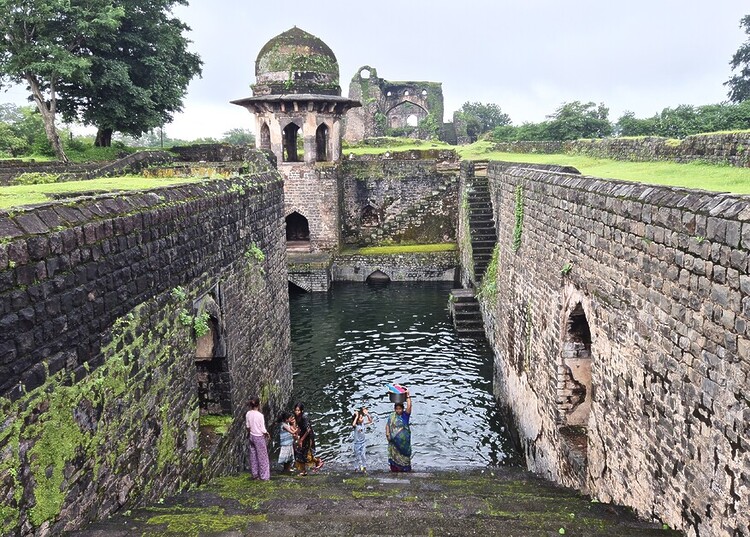
This is what makes Mandu so appealing. Beyond its headline attractions and monuments are many more structures, tombs and palaces that have a wonderful ambience and history but are peaceful quiet, inspiring and yet rarely visited.
If you have time, take a wander and let your curiosity get the better of you.
Ambience and Atmosphere
A couple of hours or so away from Mandu are the towns of Omkareshwar and Maheshwar, both on the banks of the Narmada river, which is India’s fifth longest at 3250km and flows west to east until it meets the Arabian Sea in Gujarat.
At Omkareshwar, the Shiva Temple is located high above the river near a huge hydro dam and is one of the holiest sites in India, visited by hundreds and thousands of pilgrims.
Further along, Maheshwar attracts a different loyal throng – those devoted to the finest silk saris. The town is renowned for the saris produced on dozens of hand looms, and these can be visited at certain times to see the skilled weavers at work.
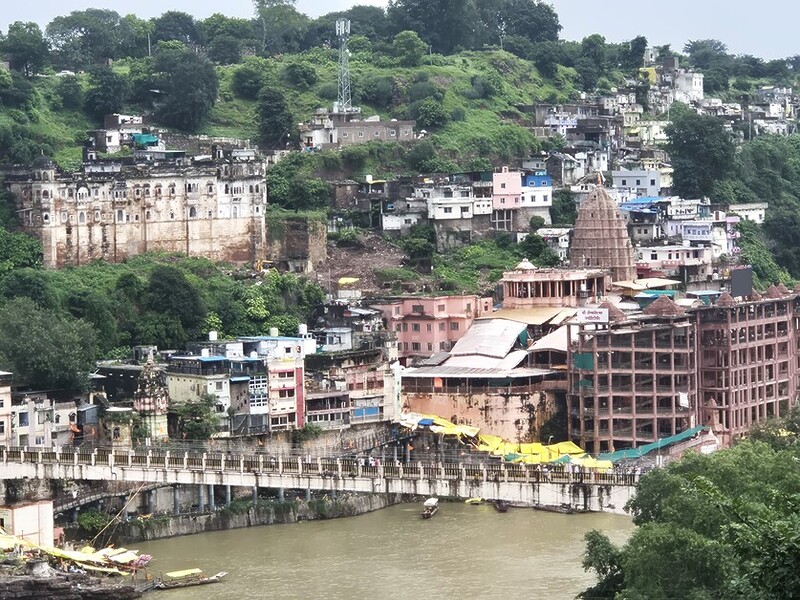
Plotting a route along the course of the Narmada can lead to fascinating visits to Omkareshwar and Maheshwar, coupled with a stay in Mandu, before venturing onward into the heart of India to discover further mysteries that will offer eye-opening surprises for the intrepid traveller.
But don’t overlook Mandu; one of India’s magical destinations with an ambience and atmosphere that will stay with you forever.
All images (C) Mark Nicholls
Tell me more about Mandu
Getting there: Indore Airport has regular flights to Mumbai, Delhi, Bhopal, Hyderabad, Ahmedabad, Jaipur, and Kolkata for international connections and sits on the two national highways of NH-3 and NH-59. It is connected to major cities, including Delhi and Mumbai, by rail.
Accommodation: Mark Nicholls stayed at the Radisson Blu in Indore and the MPSTDC’s Malwa Resort in Mandu [NINE – Malwa Resort].
For more information visit: Madhya Pradesh) or Magical Mandu

